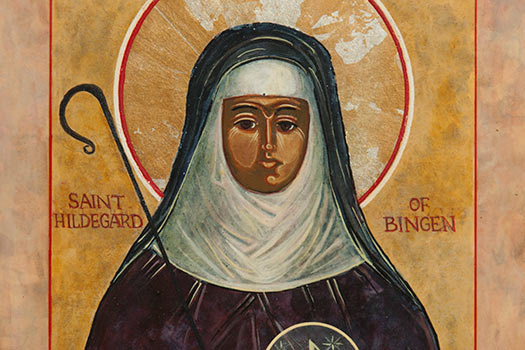History is full of male mystics – Origen of Alexandria, Augustine of Hippo, and Dante Alighieri to name a few – but it is also rich in female mystics who bring their own unique talents and perspectives to a life of spiritual contemplation. In his newest book, Craig Larkin discusses four such figures, detailing how each of them engaged in mysticism during their lives.
1. Julian of Norwich
At a young age, Julian asked three favours from God: a sight of the Passion of the Christ, some form of suffering, and the ‘wounds’ of contrition, compassion, and longing for God. A grave illness fulfilled the first and second of these three, for as the illness subsided, Julian had a number of sightings which culminated in a vision of Jesus in her own heart. Julian then became an anchoress, devoting her life to meditation and prayer, and after a lifetime spent meditating on the sightings that led her to this position, she wrote a book, stressing to readers that God’s meaning is and always has been love.
2. Hildegarde of Bingen
A woman of all trades, Hildegarde of Bingen was a skilled healer, writer, composer and theological critic. She had visions throughout her life, but after a particularly powerful one at the age of 42, she better understood the scripture she had spent her life reading, and went on to write a number of books on her visions and eventually travelled throughout her home country of Germany to Switzerland and Paris, teaching and preaching theology and her understanding of scripture to priests and princes alike.
3. Teresa of Avila
Many assume that mystics must be extremely skilled in prayer to spend their lives in contemplation as they do, but for much of Teresa of Avila’s life, prayer was a difficult, and sometimes impossible, task. It was only at the age of 40 that she truly began to engage in the practice, with the help of voices who began to speak to her. From then on, she committed herself not only to spiritual contemplation, but also to reforming and refounding convents throughout her home country of Spain.
4. Caryll Houselander
The least well-known mystic in this list, Caryll Houselander was rare in that she was a mystic, but was not involved in religious life. Rather, she lived her life normally, working as a writer, but was greatly influenced by three different mystical experiences that happened throughout her life, each involving a vision of Christ embodied by a layperson. Indeed, she lived her life expecting to find Christ in each person, and was empathetic to human sin and the wounded, gaining such a reputation for this sensitivity that doctors during World War II sent patients to her for healing.
To learn more about some of history’s greatest mystics, head over to our catalogue and order a copy of Mystics: The Beauty of Prayer.

